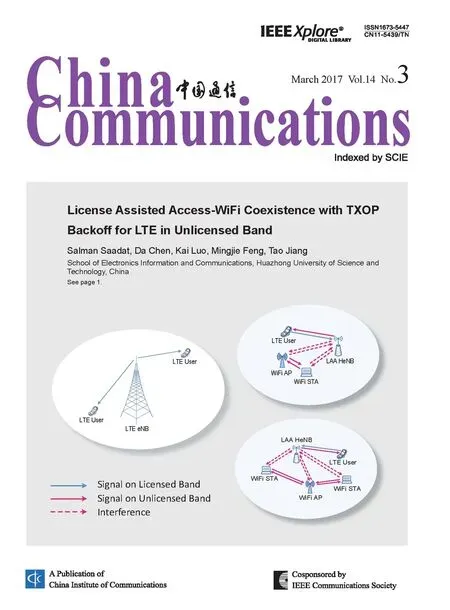Smart Service System(SSS): A Novel Architecture Enabling Coordination of Heterogeneous Networking Technologies and Devices for Internet of Things
Yongan Guo, Hongbo Zhu, Longxiang Yang
College of Telecommunications & Information Engineering, Nanjing University of Posts and Telecommunications, Nanjing 210003, China
* The corresponding author, email: hbz@njupt.edu.cn
I. INTRODUCTION
In Internet of Things (IoT), physical objects can be connected by means of the appropriate information and communication technologies,thereby enabling an entirely new class of smart applications and services[1]. As an emerging technology, IoT is gaining huge momentum around the world, via campaigns and activities across industry, academia and various levels of government [2 -4].
Internet of Things is featured by the high integration and comprehensive utilization of new-generation information technologies, the original objective of which lies in connecting various physical and virtual things in the world with information network including internet to create an Internet of Things environment where real-time and dynamic interaction of information between man, machine and things can be realized, and to make things in the world “actively connected” so as to provide service through the way of personification,ultimately realizing smart service[5]. Internet of things is not a specific network or technology, but rather, more accurately, a concept or technical idea of using network connectivity to provide intelligent services. The thought of technology of IoT can be defined as utilizing the “ubiquitous network” to realize “ubiquitous service”, that is, utilizing the ubiquitous information network technology to meet the ubiquitous demand for intelligent services[6]. In such a process, the way to construct Internet environment is to embed intelligent sensing and control terminals and devices into various industries, such as, manufacture, urban services and environmental protection. As a result one connect with cloud computing-based information service platform with big data processing ability through the Internet and other forms of network, thus realizing the organic integration of human society, physical world and information network. Ultimately, intelligent services can be provided for ubiquitous application needs through the ubiquitous network on a unified network information service platform, hence realizing the Internet-based collaboration and sharing of multi-domain resources and information services[7].
A smart service system architecture for IoT has been proposed in this paper, which is an evolutionary approach for the architecture of IoT.
Three requirements for IoT are network connection heterogeneity, device capability heterogeneity, and network extensibility[4-14],to cope with the status of present networks.Above all, the IoT is expected to provide pervasive connectivity between any type of devices or terminals. Currently, devices or terminals in IoT use different communication networks,or are equipped with multiple communication interfaces, and thus have strong heterogeneity in terms of networking interface. Secondly, devices in IoT range from PC devices to low-end battery powered embedded devices, exhibiting strong heterogeneity in terms of capability.Under these circumstances, it is challenging to use standard OSI internet architecture which requires each of its nodes to employ exactly the same protocol stack. Finally, a sustainable IoT should have the adaptability to meet continuously changing applications and service requirements, changing networking technologies, and changing terminal and device capabilities. For supporting the aforementioned three main requirements, new architectures for IoT with inherent heterogeneity, reconfiguration and scalability are needed. The current IoT architectures have no mechanism to appropriately support heterogeneity, reconfiguration, and scalability of networks, devices, and services as stated above. Therefore, this paper focuses on a new architecture with inherent heterogeneity for IoT.
This paper proposes a novel IoT architecture which named as smart service system architecture (SSS-A). SSS-A supports heterogeneity, reconfiguration, the scalability of networks, devices, and services in IoT.The remainder of this paper is structured as follows. Related work is given in Section II where existing architectures for IoT are listed and the advantages and disadvantages of each of these approaches are discussed. In Section III, we present a high level description of the proposed SSS-A for IoT, and discuss how this architecture fits in the vision of an IoT. Afterwards, Section IV describes the smart service terminal (SST), and section V presents the smart service network (SSN). SSN with SST has the following advantages: (i) supporting backwards compatibility with legacy networks, (ii) bridging networks using different communication protocols, (iii) supporting high bandwidth demand services, and (iv) higher QoS, QoE, and resource efficiency. In addition, smart service system platform is presented in section VI, which is used to offer many kinds of smart applications and services. A smart campus demonstration developed on the proposed SSS architecture is shown in section VII, which demonstrates the capabilities of our proposed architecture for IoT. Finally, we conclude with discussions in Section VIII.
II. RELATED WORK
From the perspective of network architecture,three requirements are the most important for IoT[4-14].
2.1 Network connection heterogeneity
The first and foremost requirement of the IoT is to provide the pervasive connectivity between any type of objects: from machine to machine, from person to machine or from machine to person. The objects in IoT possess unique features in terms of both communication technologies and capabilities[4].
Terminals and devices that wish to exchange information may use different communication technologies. Thus, any architecture suitable for an IoT must be able to efficiently support communication between devices,even though they use different communication networks and different radio frequencies.In addition, many terminals and objects will be equipped with multiple communication interfaces such as several cellular interfaces,IEEE 802.15.1 blue-tooth interface, and IEEE 802.11 WiFi interface, IEEE 802.15.4 interface, or wired interface, or even satellite interface. This means that the devices in IoT have strong heterogeneity in terms of networking interface.
2.2 Device capability heterogeneity
Moreover, the terminals and sensing devices can have different capabilities[4-12]. Devices in IoT range from PC devices to low-end battery-powered embedded devices. Those devices demonstrate a strong heterogeneity in terms of their function and capability. For instance, a typical industry monitoring network employs both hardware and software resource-limited embedded devices, and controller PCs with strong hardware and software capability. For this kind of system, it is difficult to use standard OSI Internet protocol stack,because each node requires exactly the same protocol stack. If a reduced protocol stack is designed specifically based on the most capability restricted devices, then the powerful devices, such as central PC will be limited.
2.3 Network extensibility
A sustainable architecture for IoT should be able to adapt to the continuously changing application and service requirements, changing networking technologies, and changing terminal and device capabilities[4-12]. The primary reason is that the wireless communication technologies, and the terminal capabilities are evolving always. For instance, currently LTE is deployed around the world, and LTE will offer much higher data rate than any 3G cellular networks, so it needs to incorporate LTE networks into IoT for high bandwidth demanding services and applications, such as high definition video services etc.
In order to address the aforementioned issues, new network architectures for IoT should have the inherent capability to support reconfiguration and heterogeneity. This implies that the architecture should be developed mainly by using the following two ways;namely, (i) ‘evolutionary’ architectures and (ii)clean slate ‘revolutionary’ architectures[4].
Evolutionary approach for the architecture of IoT allows the reuse of as many components as possible from existing networking technologies[4]. In this way, the current networking technologies should evolve into an architecture that is more suited for the IoT, by the following two strategies. The first strategy is to gradually modify the existing networking technologies whenever the need arises, such as replacing one function at a time. A typical example is the introduction of IPv6 addressing to replace the current IPv4 counterpart. For the feasibility of this approach, architectures should be easily extensible to facilitate the incorporation of new networking technologies[15]. The second strategy employs virtualized network components. Network virtualization[16] is used to present underlying network layers in a uniform way towards a higher level application. A specific group of terminals and devices are connected by a virtual network which is a partition of physical networking infrastructure. The FP7 4WARD project[17]considers virtual networks to be a fundamental part of the future internet, and uses virtualized network to provide in-network management,generic connectivity and content-centric information objects[18]. The MAGNET project[19] adopts network virtualization at both layer 2 and layer 3. Also the ITEA2 UseNet project[20] aims at network virtualization for machine-to-machine communication. One well-developed solution is VPAN[21], in which self-organizing and self-maintaining overlay networks are created. Network virtualization is a fundamental part of next-generation network, where different logical networks are created for different applications and services based on multiple existing networks[22].
Revolutionary approach emphasizes the need for a clean slate architecture that inherently copes with next-generation network challenges[4, 15,23]. Clean slate initiatives are not always meant to be used for new networks,but also can be brought into existing networks.Several approaches have been proposed in the literatures. The SENSEI project[24] solves the inaccessibility of low-resource end devices by collecting all data from the end devices and making it available in a centrally accessible database, and this is called database centric architecture. But this approach often results in significant network overhead. The Semsor Grid4Env project[25] is a content centric architecture, and it focuses on the development of a semantic middle ware layer. Usually for content centric architecture, the network layer protocols are implemented semantically using a ‘descriptive language’[26] that focuses on functionality rather than implementation.Unfortunately, the content centric architecture lacks of directly connecting different networks at the network layers. Another revolutionary approach is the cloud computing, which offloads resource intensive tasks to more capable nodes. The cloud computing can offer infrastructure, platform or software as a service to less capable devices[27] [28]. But the cloud computing is regarded as a high layer service,so it does not solve the multiple network interconnecting. The forth revolutionary approach is service oriented architecture (SOA)[4].SOA uses loosely coupled software entities to implement a single software function. In SOA,software services are dynamically combined to form ad hoc applications. For the IoT, SOA has two obvious disadvantages[4, 29]: (i) SOA mainly focuses on the higher layers rather than the networking and (ii) the technologies used to realize SOA, such as ML, SOAP, Web Services or BPEL, are often not suited for use in resource-constrained devices.
Previous results on the design of new network architecture do not cope with specific IoT challenges, also lack of implemented prototypes[4]. The SSS architecture is proposed in this paper, which is an evolutionary approach for the architecture of IoT. The main reason for taking evolutionary approach is that the multiple networking technologies will still exist for a long time period, and a single universal network replacing all existing networks is impossible in the next coming years. If the architecture satisfies the three important requirements for the architecture of IoT, then it is a right candidate for the IoT.
The following proposed SSS architecture does satisfy the three important requirements for the architecture of IoT as we see later in the discussions.
III. SMART SERVICE SYSTEM (SSS)ARCHITECTURE FOR IOT
For IoT, a good architecture should (i) enable the optimized communication at a network and link level when multiple heterogeneous networks exist, (ii) enable the optimized communication when multiple terminals, belonging to different networking technologies with different level resources exist, (iii) be backwards compatible with multiple existing networking technologies. Based on the three important requirements for the architecture of IoT, the SSS architecture is proposed in this paper, which is satisfies the three important requirements for the architecture of IoT, then it is a right candidate for the IoT.
The SSS architecture for IoT is presented in this paper to realize the smart information services in a wide spectrum. The key point of SSS architecture lies in its universal architecture that supports multiple kinds of terminals and devices, multiple kinds of networking technologies, multiple available information sources, multiple kinds of existing and emerging services and applications. Furthermore, the information system based on this architecture will be a universal smart information system.The smart service system architecture for the IoT is shown in Fig. 1.
The proposed smart service system architecture (SSS-A) for the IoT consists of three layers:
1) smart service terminal (SST) layer,which is actually a virtual terminal (VT). In this layer, the multiple heterogeneous terminals are connected by the local networking technologies to form a single terminal.
2) smart service network (SSN) layer,which actually is a virtual network (VN. This layer enables multiple networks to serve as a single network.
3) smart service system (SSS) platform layer, which consists of virtual information platform (VIP) sublayer, and integrated service platform (ISP) sublayer.
Further, the security subsystem is a fundamental element for SSS architecture. The SST connects multiple terminals and devices (such as sensors and actuators) belonging to different networks and systems together to form an integrated terminal to offer environmental interaction services. The idea behind SST is that by aggregating multiple terminals and devices together, the SST will be a super-terminal with enhanced capability, multi-interfaces,and strong coordination. The SST aggregation is always user-oriented and service-oriented,thereby rendering the SST easy to realize smart services, and able to improve user experience greatly. The SSN integrates multiple networks together, such as Internet (wired or WiFi), cellular networks (LTE, 3G, 2G etc.),broadcasting and TV networks, wireless sensor networks, RFID etc., to form a unified virtual network. The SSN can operate on different frequency bands, different air interfaces, different protocols, and different terminals and devices. The SSN offers a wideband, high performance, and high efficiency transport network for the SST and SSS platform. VIP converges all available information into a single entity to form a comprehensive information database for the use of all applications and services by data storage, exchange, mining, processing, and fusion. VIP is a universal open and synthesized information database for all kinds of smart services and applications.Integrated service platform (ISP) organizes and realizes all the applications and services for users in SSS form. ISP supports existing and potential future smart services and applications for different areas. In addition, there is a management and supporting sub-system(MSS) for smart service system. The MSS is responsible for authentication, security, user access, service performance monitoring, fault detection, accounting etc., also it offers complete environment for system owners to create a specific smart service system inside this smart service system.
The logical relationship of main parts of SSS architecture is shown in Fig. 2. The functional description of SSS architecture is shown in Fig. 3.
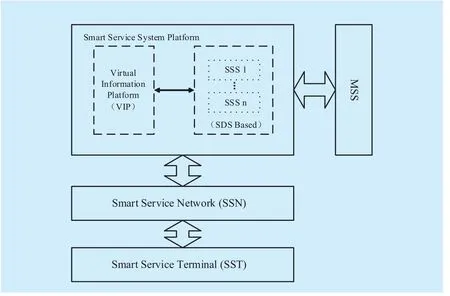
Fig. 1 Smart service system (SSS) architecture for IoT
The proposed SSS architecture has the following advantages: (i) The devices contained in this architecture cover multiple kinds of traditional terminals and sensor-actuator devices.(ii) The communications network in this architecture is a converged network, which coordinates multiple kinds of existing and emerging networks. This converged network offers ubiquitous access for multiple kinds of sensors and terminals. (iii) The services and applications in this architecture include all kinds of smart services for IOT.It also presents the adaptability to new services and applications.
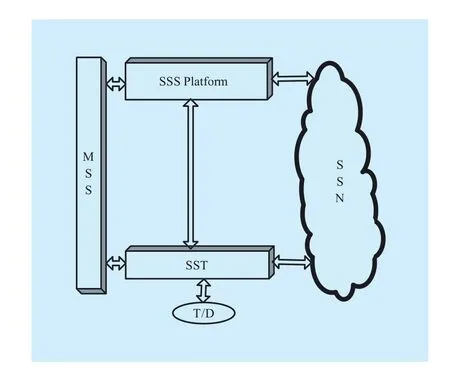
Fig. 2 Logical relationship of main parts of SSS architecture
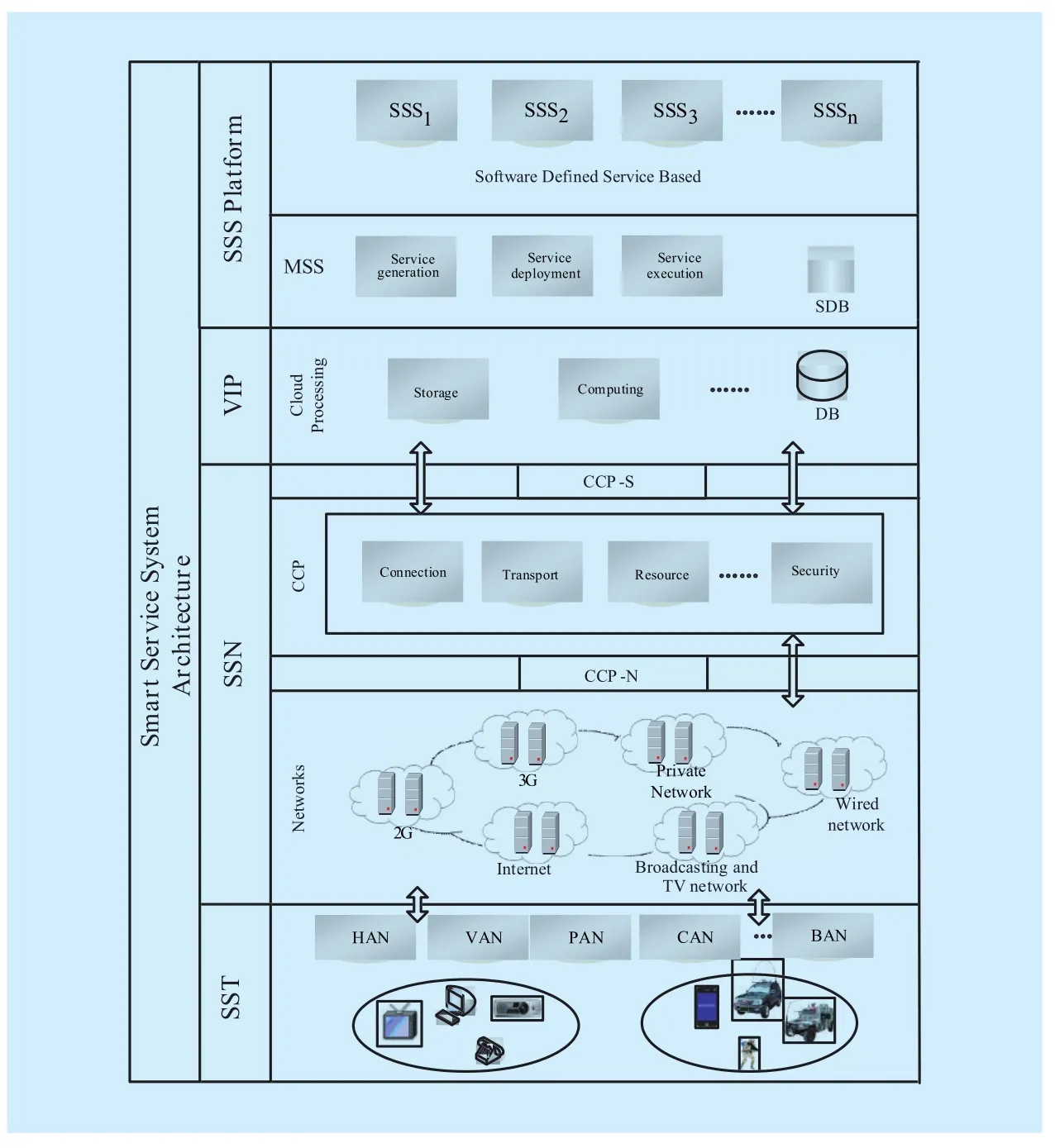
Fig. 3 The functional description of SSS architecture
IV. SMART SERVICE TERMINAL (SST)FOR IOT
In many application scenarios of the IoT, there are a huge amount of sensing and serving terminals and devices, such as thousands of sensor devices. These terminals and devices usually belong to different networks and systems and are, thus, difficult to cooperate for a service or application. In the worst case,they may even fail to directly communicate with each other. To address this concern, if we aggregate the multiple terminals and devices belonging to the different networks and systems into a single virtual terminal, and enable the members of this virtual terminal to communicate with each other directly, then the sensing and service quality can be significantly improved. Furthermore, the user experience could be much better than separated terminal and device case. Based on this idea, the smart service terminal (SST) is proposed in this paper for the SSS architecture.
Fig. 4 shows a scenario with multiple terminals and devices for a single user. The user owns multiple terminals and devices.For instance, in an office, the user typically has a computer, fax machine, and printer. At home, the user owns PSTN phone, TV set, and notebook. When the user is inside his car, he uses navigator, camera, and hand phone. The user almost always carries hand phone, PDA,digital camera, and earphone. These terminals and devices belong to different systems and networks, use different networking technologies and interfaces, and possibly belong to different operators. It is by the coordination of the SST members presented in the proposed architecture that enables a easy connection among these terminals. Meanwhile, the user is able to enjoy the best experience (ABE) and the consistent service experience.
SST aggregates several terminals and de-vices belonging to the multiple systems. For instance, inside a SST, there is a mobile phone belonging to WCDMA network, a mobile phone belonging to CDMA2000 network, a notebook belonging to Internet, several readers from a RFID system, and the multiple nodes belonging to a wireless sensor network.Originally, these terminals and devices have their own IDs, and are connected to their own systems. These terminals and devices cannot share information directly at the terminal location. We use short-range networking technologies to connect these terminals and devices together, forming a local wireless network around the terminals. By networking, the terminals and devices in a SST can exchange information directly. Such direct information exchange is helpful to offer some new wideband services on one hand, and makes it possible to merge sensing data at the sensing place for data compression and improved data effi-ciency on the other. The independent terminal or device has its own identification, such as a mobile phone with its unique number, a RFID reader with its own ID code, and an entrance guard terminal with fingerprint. The terminals and devices inside a SST use their own IDs to authenticate users, when they access the authentication firstly. SSS system assigns a unique identification number for all terminals and devices belonging to the defined SST.
SST defined in this paper has stronger functions than the single terminal or device.For instance, we may use multiple temperature sensors to form a SST. Consequently,the data amount of sensed temperature will be considerably reduced, because multiple temperature sensors located in the same area are highly correlated, and the SST can reduce the data amount by certain processing, such as linear prediction. This is helpful to reduce the sensed data load. Another example is using multiple low-accuracy sensors to form a SST to achieve a higher sensing accuracy. Also, we can construct an SST with multiple cameras to offer stereo, high definition, or full view video services. In addition, we could use multiple terminals to produce multi-functional multimedia terminals. Following this way, we have realized some new high performance services in our test-bed based on this SST technology.Examples are 1) high definition and super definition video services on cellular handset by multi-stream parallel transmission, 2) high data rate download by multi-stream parallel transmission etc.
As stated previously, SST is a virtual terminal that aggregates multiple terminals and devices belonging to different networks and systems by short range networking technologies, thereby enabling direct communication among its constituent members. According to the specific service request and surrounding environment, an SST selects certain terminals and devices to form a context and service aware super-terminal for the implementation of coordinated cross-network and cross-system sensing and service. SST is context-aware;here context means the information which will in fluence the user service, including user context, device context, and network context.
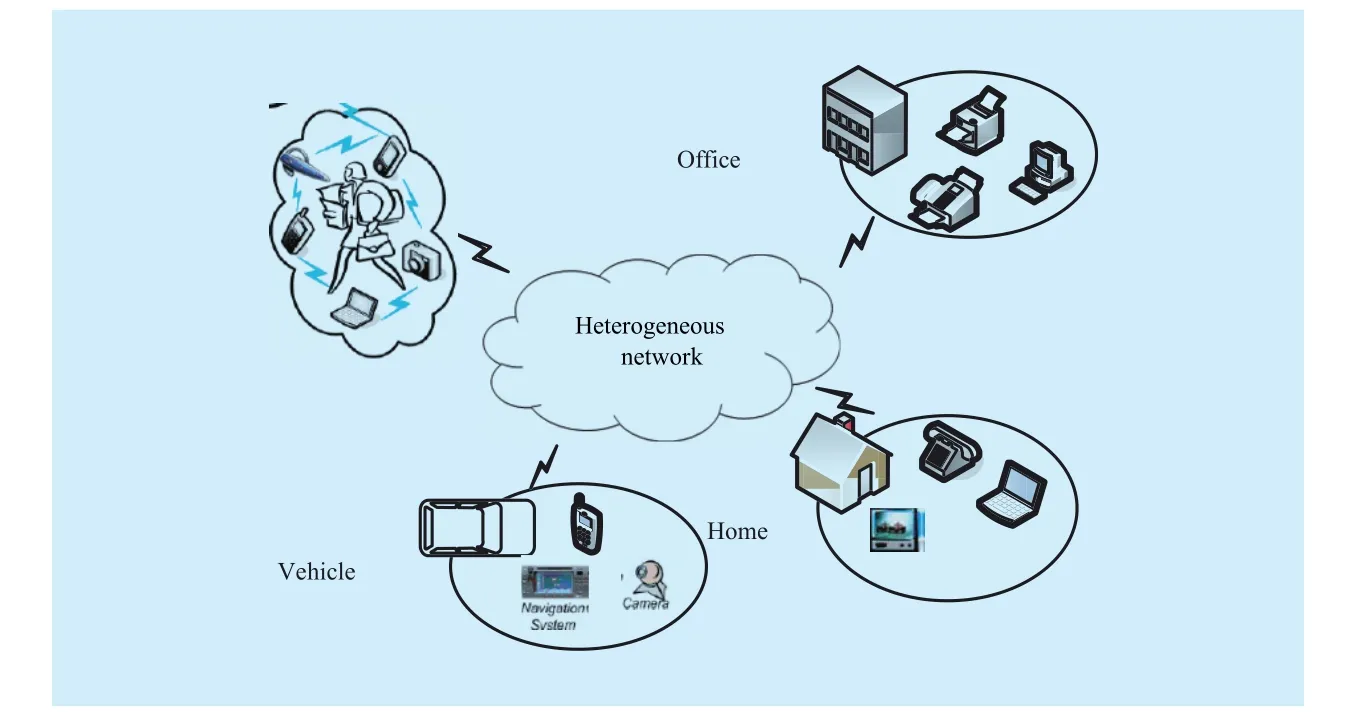
Fig. 4 One user with multiple available devices
The SST composition is illustrated in Fig. 5.It is a super-terminal with stronger capabilities by networking multiple terminals and devices surrounding a user based on short range networking technologies. Two key considerations decide which terminal or device is aggregated.One is the user’s specific service requirements,and the other is the user environment context.
The SST functional architecture is illustrated in Fig. 6. In the SST, the important functional entities include user context, device context, user interface, device discovery, coordination management, and security etc. In addition, for supporting the SST, a functional body is required at the network side with the following functional entities: context aware,aggregation and reconfiguration, service negotiation and adaptation, authentication and registration, and security etc.
The previously discussed SST is of a centralized topology, in which terminals and devices are located at one place surrounding a user. The topology of SST is distributed,where the terminals and devices are located remotely. The distributed SST structure is arranged on two layers as illustrated in Fig. 7.The first layer is named as the cluster of SST,and the second layer is called the service-oriented layer of SST. On the cluster layer, multiple terminals and devices are still connected by short range wireless networking technologies the same as a centralized SST. Multiple clusters will be aggregated to form a distributed SST for a specific service by multiple gateways. Every cluster is responsible for its own routing setup and communications. The communications between clusters of a distributed SST is performed by multiple gateways.
The enabling technologies for SST includes: 1) the definition, representation, and sensing methodology of environmental context, 2) the discovery, authentication, and registration mechanism for the members of SST,3) aggregation and reconstruction mechanism of SST, 4) the right networking technologies for SST, 5) the protocol stack design of context cognition, terminal aggregation, reconstruction, service adaptation etc.
The SST has been verified in our smart campus system which is described in Section VII.
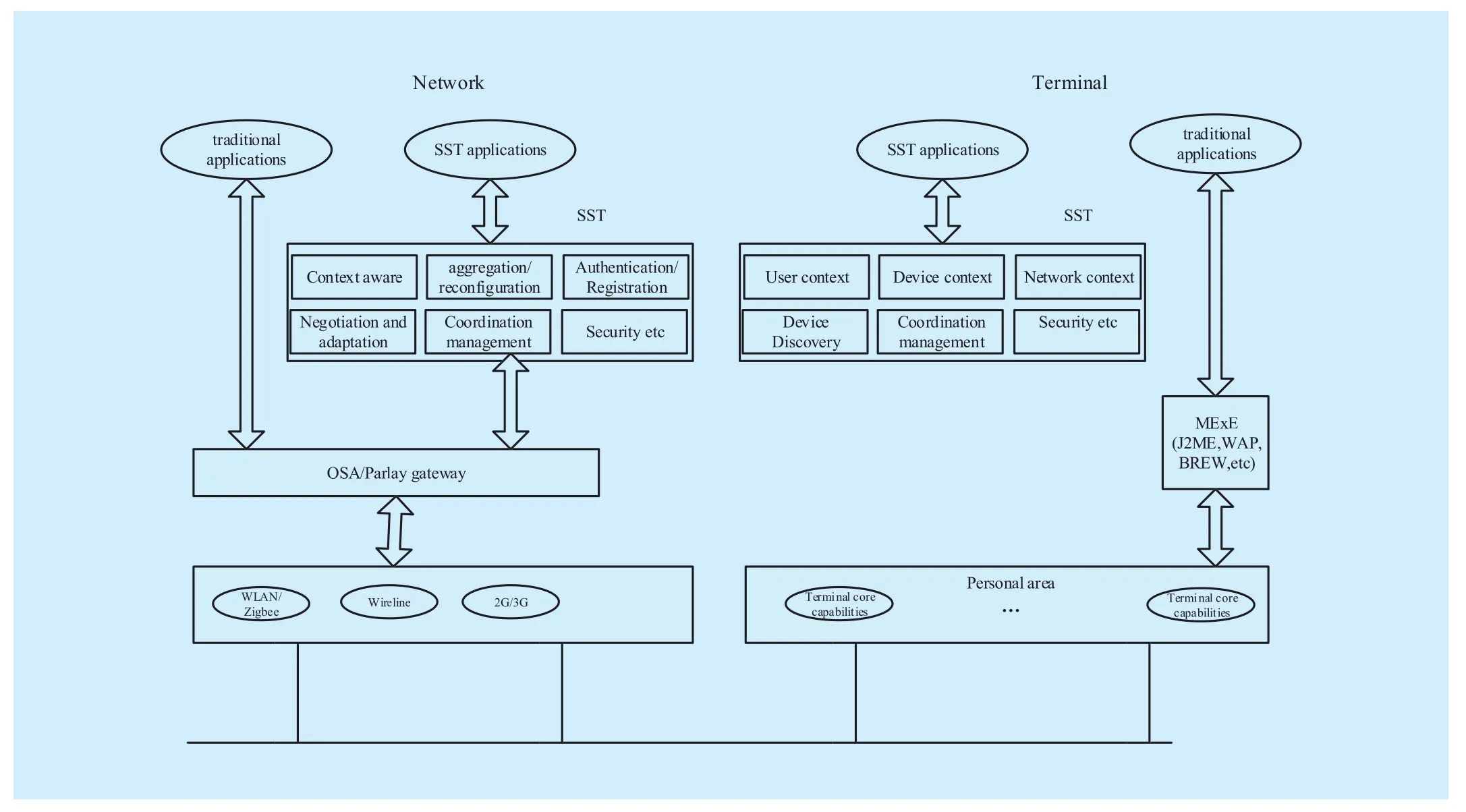
Fig. 6 The SST functional constitution
V. SMART SERVICE NETWORK (SSN)FOR IOT
IoT is aiming at connecting any terminal or device, so we need an ubiquitous and heterogeneous transport network to realize this target. At the access end, the convergence and coordination of multiple access technologies or networks are a right approach.
Currently, the access technologies or networks possess heterogeneity. The heterogeneity manifests itself in the following aspects: 1)different radio access networks operate in different frequency bands, 2) different radio access networks use different air interfaces and protocols, 3) different radio networks offer different services and applications, 4) terminals and devices are different in different radio access networks, 5) the operation policies are different for different operators.
There are multiple communication networks available for IoT, such as wireless and cellular networks, Internet, and broadcast and cable TV networks. These networks exhibit different characteristics in terms of frequency,networking architecture, service demand, terminal, management and operation, capacity,coverage, data rate, and mobility. Obviously,no single networking technology could satisfy all the requirements of smart services in IoT.Convergence and networking coordination based on multiple network technologies is a reasonable approach to synthesize a network for the IoT. Network convergence and coordination that are built on multiple networks can maximize the networking capability, optimize the resource efficiency, improve the network performance, and offer the best user experience. Following this philosophy, in this section, the proposed smart service network will be abbreviated as SSN, as its feature in the actual network convergence and the coordination of multiple networks.
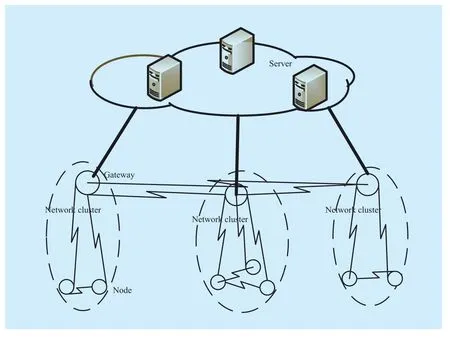
Fig. 7 The distributed SST composition
The basic idea of SSN is in order. According to the specific requirements of a service,terminal environment cognition context, and network cognition context, smart service network selects one or several networks to form a serving network for this service. The main functions of the smart service network include the environment cognition of multiple available networks, network discovery, network selection, connection setup, integrated resource management, vertical handoff among multiple networks etc. Thus the smart service network supports terminal mobility, service continuity,and multi-hop transmission. The smart service network improves the IoT in the following aspects, such as smart service quality, resource efficiency, network capacity or throughput,data transmission rate, user experience, and the types of services. Currently our test-bed integrates and coordinates the following networks, they are GSM, GPRS, EDGE, WCDMA, CDMA2000 1X and EV-DO, TD-SCDMA, wired Internet, ADSL, WiFi and WLAN,RFID, Zigbee and Bluetooth.
The smart service network consists of two main parts with one formed by multiple networks which include, for example, cellular networks, wired telecommunication networks,broadcast and TV networks, Internet, etc. Another part is the coordinated control platform(CCP), which coordinates and controls multiple networks to form a single integrated network. The CCP coordinates the resources,accesses, connections, securities etc. The CCP has two interfaces, named as coordinated control platform service interface (CCP-S) and coordinated control platform network interface(CCP-N), respectively. The CCP-S provides interface with upper service platform enabling the service platform to use the smart service network. The CCP-N is an interface with the lower multiple networks, whereby the CCP can control and use the multiple networks.
The main capabilities and enabling technologies for SSN are: 1) the environment context representation methodology, protocol, and software for smart service network under the multiple network circumstance, 2)network environment cognition method and algorithms, including the sensing of network frequency, load, throughput, delay, radio channel state, signal quality etc., 3) the algorithms and protocols for network discovery, network selection, connection setup and control etc based on multiple networks. For instance, optimal network selection is pursued to reduce the network block rate by adaptively adjusting according to the service type, service attribute,terminal mobility, network load, and the terminal position. 4) bandwidth allocation policy,a mechanism responsible for allocation of different bandwidths as required, e.g., in real-time and non-real-time services. For higher priority service, a wider bandwidth is allocated. 5) the scheme, algorithm, and protocols for multi-stream transmission based on multiple networks for high bandwidth services. 6) coordinated radio resource management over multiple radio networks, including access control, frequency allocation, connection switch,load balance, power control etc. 7) network resource optimal technologies, such as dynamic frequency sharing, distributed cooperative opportunistic scheduling, dynamic sensor node clustering, and diversity transmission mechanism etc. 8) service adaptability, for instance when network bandwidth is not enough, then video service is downgraded to voice service,9) vertical handover algorithms over different networks, and 10) adaptation scheme of media stream to the terminal capability, etc.
VI. SMART SERVICE SYSTEM (SSS)PLATFORM FOR IOT
The smart service system (SSS) platform consists of a virtual information platform (VIP)and multiple smart service store. In what follows, we will describe them respectively.
6.1 Virtual Information Platform(VIP)
The VIP contains information data from all available information systems. There are so many information systems around the world,such as governmental department information systems, enterprise information systems, etc.The VIP gathers all available information data from all available information systems, then performs convergence, integration, classification, and exchange to form an integrated information platform. The VIP is an information-shared platform which covers different sections, applications, and systems. Hence, for any specific requirements, the SSS is able to offer prompt and satisfactory services.
The VIP consists of the following modules:authentication module, access module, storage and computing module, middleware, development module etc.
The enabling technologies for VIP are: 1)data categorization, 2) open indexing, 3) data mediator, 4) data mining and analysis, 5) network information retrieval, 6) data security and data duplication, 7) knowledge base, 8)information discovery, 9) smart processing for massive information, 10) distributed processing and smart data analysis based on cloud computing, 11) middle-ware, 12) platform management for distributed database, 13) platform for service and application development.
6.2 Smart service store (SSST)
The SSST is mainly composed of multiple independent stores, such as governmental service store, travel service store, business service store etc. In addition, there are system main gateway, smart service store supporting sub-system, and system security sub-system.The supporting sub-system provides interfaces for any smart service store, and also offers a powerful service creation environment and tool. As such, it is convenient for smart service providers to create and offer a specific smart service. System security sub-system contains integrated identification management, identity authentication, authorization and access control etc. Integrated identification management ensures the user’s security, especially the sensitive information. Identity authentication realizes the bilateral authentication between user and platform. After authentication, authorization and access control gives suitable access right to a user, so the user can only access the authorized service and data.
The smart service store has the following advantages: 1) strong scalability, 2) high reliability, 3) strong flexibility, 4) high security, 5)easy and low cost to create and deploy specific smart services, etc.
VII. THE APPLICATION OF SSS: SMART CAMPUS
Currently, a university is typically equipped with multiple independent information systems. These different information systems operate in isolation, without information sharing with each other. Such isolation is attributed to following reasons: 1) these information systems use different standards, 2) these information systems use different information coding specifications, 3) these information systems were developed based on different software platforms, 4) these information systems use different identifications. Usually for one management function in the campus, there is a specific information system; for example,a teaching information system for the management of teaching and learning, a financial information system for financial management,and a library information system for library.The drawbacks of multiple information systems in one university are obvious, creating high operation cost, and low information resource efficiency among others.
It is possible to design a completely new campus information system based on the SSS architecture. The main idea is that the overall campus information system adopts SSS architecture, with one specific service designed as one system. So there are multiple systems in the smart campus information system, such as teaching system for teaching and learning management, research system for research activities, administrative system for all administrative management, life system for staff and student living inside campus, etc. This smart campus system integrates together all information systems, all available networks covering the campus, all terminals and devices, so that it can offer all services in a smart manner. For a user inside the campus, just one identification is needed, but he or she can get all services conveniently and efficiently.
Our developed smart campus system is shown in Fig. 8. This SSS system has been implemented in the campus of Nanjing University of Posts and Telecommunications(NUPT), China for over 2 years. The SSS architecture and related features have been strongly proved in this practical system.
The CSS (Campus Security System) is one representative system in our developed smart campus system. It is a good example to show the necessity of our proposed SSS architecture for IoT and to describe its features. The CSS provides smart on-campus security services for NUPT, with an efficient video-monitoring function. Before its installation, there were multiple cameras used on the campus, which were connected to the monitoring center by wired internet or WLAN. The camera system just covered about 7% area of the NUPT campus, and did not support mobility. Some unexpected events or accidents, such as student sudden illness on playground, can happen on campus, and need real time video for delivery to the monitoring center. The camera system fails to do so, due to its lack of mobile terminals with wireless connection to the monitoring center for high-definition real-time video transmission from the fields.
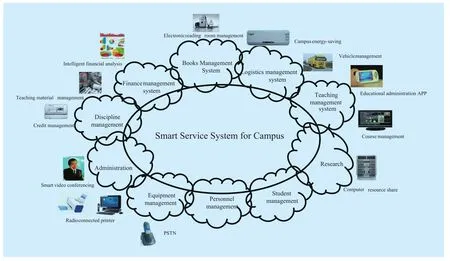
Fig. 8 Smart campus system of NUPT
The CSS smart service terminal consists of multiple cell phones. The maximum number of phone that forms a SST in our system is set to 8. These terminals, belonging to WCDMA,CDMA2000, and TD-SCDMA networks,respectively, are aggregated to form a virtual SST to offer high definition video service for campus security services. For instance, a student accident happens on a playground not covered by WLAN. The previous system fails to function appropriately. In this case, our CSS initiates several cell phones nearby the accident site to form an SST, and these cell phones cooperate according to our SSS architecture.Our experiments showed that the maximum data rate for up-link video transmission could reach 2Mbps when 8 WCDMA phones were aggregated together to form an SST. The data rate is significantly increased by SST and SSN approaches. Within the NUPT campus area,WCDMA, TD-SCDMA, and CDMA2000 mobile networks are available. Measurements showed that the averaged up-link data rate for WCDMA network was 330kbps from 7am to 10pm, for CDMA2000 network was 270kbps,and for TD-SCMDA was about 160kbps.High-definition monitoring video typically operates at 1Mbps. Clearly, any mobile network alone does not work. For the worse case, at some special spots, the averaged uplink data rate was much lower than the above averaged values, because of fading and shadowing factors. In our CSS, 1Mbps up-link video transmission was easily realized by SSS,through several steps. First, the CSS senses the channel states of WCDMA, CDMA2000,and TD-SCDMA, and estimates the respective potential data rate. Then, according to the estimated data rate, selects several channels from WCDMA, CDMA2000, and TD-SCDMA to form an instant SSN, and selects several terminals to form SST for this service. Finally,the SSN and SST execute control functions to transmit video. During the transmission, the CSS is likely to reconfigure its SST and SSN whenever better mobile channels and/or terminals are available. These experiments show that our CSS always presents a good high defi-nition video whose quality cannot be achieved by any single mobile network. These experiments, though preliminary, are encouraging.They demonstrate the advantages of SSS over its existing counterparts, and verify the cor-rectness of our proposed architecture for IoT.
VIII. CONCLUSIONS
In IoT, a great number of objects and terminals are connected with each other. These objects and terminals can be very diverse in terms of the used communication technologies. Clearly,there is an immediate need to design an architecture for the IoT that can support multiple networking technologies efficiently. For this purpose, the smart service system architecture for IoT has been proposed in this paper, which is an evolutionary approach for the architecture of IoT. The main reason for using evolutionary approach is that multiple networking technologies will still exist and happen for a long time period. As a result any single universal network replacing all existing and emerging networks is impossible to implement in the next ten years.
The proposed SSS architecture is a universal architecture that supports all kinds of terminals, devices and networking technologies. It also include all available information sources, all kinds of existing and emerging services and applications. In other words, the IoT system based on the proposed architecture can be a universal smart service system.
The SSS architecture consists of a smart service terminal (SST), a smart service network (SSN) and a smart service system platform. In order to access the IoT under the case where there are diverse communication networks, terminals, and services, the proposed architecture has integrated the following advantages: (i) The terminals and devices contained in this architecture cover traditional terminals and sensor-actuator devices. (ii) The communications network in this architecture is a converged network, which coordinates all kinds of existing and emerging networks,such as Internet, ADSL, cellular networks,and wireless access networks which covers WLAN, Bluetooth, Wimax, WSN, RFID etc.This converged network is a ubiquitous network, so that it will offer a ubiquitous access for all kinds of sensors and terminals, which is impossible for previous similar systems. (iii)The services and applications in this architecture has included all kinds of smart service areas. We have also presented its adaptability to new services and applications. Previous information system is oriented and designed for a specific area, such as intelligent transportation system. The architecture presented in this paper has been shown the flexibility to develop and deploy new services and applications.
In conclusion, the proposed SSS is a converged architecture for the IoT. It can apply to three domains, namely, the terminal and device domain, networking domain, and information and service domain.
Based on the proposed SSS architecture,a smart campus demonstration system has been developed and implemented in Nanjing University of Posts and Telecommunications.Such an implementation has validated the correctness and capabilities of SSS architecture for IoT.
ACKNOWLEDGEMENTS
The work is supported by the national 973 project of China under Grants 2013CB329104,the Natural Science Foundation of China under Grants 61372124, 61427801, the Natural Science Foundation of the Jiangsu Higher Education Institutions (Grant No.13KJB520029),the Jiangsu Province colleges and universities graduate students scientific research and innovation program CXZZ13_0477,NUPTSF(Grant No.NY214033).
[1] ITU Internet Reports 2005: The Internet of Things. http://www.itu.int/dms_pub/itu-s/opb/pol/S-POL-IR.IT-2005-SUM-PDF-E.pdf
[2] G Virone, A Wood, L Selavo, Q Cao, L Fang, T Doan, Z He, R Stoleru, S Lin, J.A Stankovic, “An Advanced Wireless Sensor Network for Health Monitoring”,International Journal of Advanced Research in Electrical Electronics & Instrumentation Engineering, vol.3,no.2,pp.479-481, April,2006.
[3] H.R Yan, Y.Z Xu, M Gidlund, “Experimental e-Health Applications in Wireless Sensor Networks”,Wri International Conference on Communications and Mobile Computing IEEE Com-puter Society, pp.563-567,Jan,2009.
[4] E. D Poorter, I Moerman, P Demeester, “Enabling direct connectivity between heterogeneous objects in the internet of things through a network service oriented architecture”,EURASIP Journal on Wireless Communications and Networking,vol.2011, no.1, pp.1451-1459, Dec ,2011.
[5] H.B Zhu, L.X Yang, “The technology system innovation of Internet of things and the development of intelligent service industry”,Information and Communications Technologies,-no.5,pp.4-5,oct,2013.
[6] H.B Zhu, L.X Yang, Q Yu, “Investigation of technical thought and application strategy for the internet of thing”,Journal of Communications,vol.31,no.11,pp.2-9,nov,2010.
[7] H.B Zhu, L.X Yang, S Jin, D.Y Zhang, C.H Cheng,Q Zhu, Y.A Guo, “Coordination Innovation Architechture for IoT and Development Strategy of Smart Service Industry”,Journal of Nanjing University of Posts & Telecommunications(Natural Science), vol.34, no. 1, pp.1-9, Jan, 2014.
[8] J Gubbia, R Buyyab, S Marusic, M Palaniswami,“Internet of Things (IoT): A vision, architectural elements, and future directions”,Future Generation Computer Systems, vol.29, no.7, pp.1645–1660, Sep, 2013.
[9] B Katole, M Sivapala, V Suresh, “Principle Elements and Framework of Internet of Things”,International Journal of Engineering and Science,vol.3, no.5, pp. 24-29, Jul,2013.
[10] D Miorandi, S Sicari, “Internet of things: Vision,applications and research challenges”,Ad Hoc Networks, vol. 10, pp. 1497-1516, 2012.
[11] L Atzori, A Iera, G Morabito, “The Internet of Things: A survey”,Computer Networks, vol. 54,pp. 2787-2805, 2010.
[12] O. G Sobrinho, C. E Cugnasca, “An Overview Of The EPCglobal Network”,IEEE Latin America Transactions, vol.11, no.4, pp.1053-1059,Jun,2013.
[13] I Ishaq, D Carels, G. K Teklemariam, J Hoebeke,F.V Abeele,E.D Poorter, I Moerman,P Demeester,“IETF Standardization in the Field of the Internet of Things (IoT): A Survey,”Journal of Sensor and Actuator Networks, vol. 2, pp. 235-287,Apr,2013.
[14] O Said, M Masud, “Towards Internet of Things:Survey and Future Vision”,International Journal of Computer Networks (IJCN), vol. 5, no. 1, pp.1-17, 2013.
[15] A Feldmann, “Internet clean-slate design: what and why?”,Acm Sigcomm Computer Communication Review, vol. 37, No. 3, pp. 59-64, Jul,2007.
[16] N.M.M.K Chowdhury ,R Boutaba, “A survey of network virtualization”,Computer Networks, vol.54, no. 5, pp. 862-876,Apr,2010.
[17] The FP7 IST 4WARD project, “Architecture and Design for the Future Internet”, http://www.4ward-project.eu.
[18] FP7-ICT-2007-1-216041-4WARD / D2.1,Technical Requirements. http://mmlab.snu.ac.kr/courses/2008_topics_in_internet/paper/11.5/4ward-Technical%20Requirements.pdf
[19] R.L Olsen, F Fitzek, R Prasad, J Saarnio, “My personal Adaptive Global NET-MAGNET”,World Wireless Research Forum,Jan,2009.
[20] The European ITEA project, https://itea3.org/.
[21] J Hoebeke, G Holderbeke,I Moerman, “Virtual Private Ad Hoc Networking”,Wireless Personal Communications,vol.38,no.1,pp.125-141,jun,2006.
[22] N Niebert, I.E Khayat, S Baucke, “Network virtualization: A viable path towards the future internet”,Wireless Personal Communications, vol.45,no.4, pp.511-520, Jun,2008.
[23] J Roberts, “The clean-slate approach to future internet design: a survey of research initiatives”,Annals of Telecommunications, vol. 64,no.5,pp.271-276, Jun,2009.
[24] FP7 Sensei project. http://www.sensei-conversation.eu.
[25] SemSorGrid4Env project. http://linkeddata4.dia.fi.upm.es/ssg4env/default.htm.
[26] D Chu, J.M Hellerstein, and T.T Lai, “Optimizing declarative sensornets,”International Conference on Embedded Networked Sensor Systems,pp. 403–404, 2008.
[27] V.B Misic, R Buyya, D Milojicic, Y Cui, “Guest Editors’ Introduction: Special Issue on Cloud Computing”,IEEE Transactions on Parallel and Distributed Systems,vol.24,-no.6,pp.1062-1065,jun,2013.
[28] L.M Vaquero,L Rodero-Merino,J Caceres,M Lindner, “A break in the clouds: Toward a cloud definition,”Acm Sigcomm Computer Communication Review, vol. 39, no.1, pp. 50-55, Jan,2009.
[29] M Pistore, P Traverso, M Paolucci, M Wagner,“From software services to a future internet of services”,Towards the Future Internet: A European Research Perspective. pp. 183-192, May,2009.
- China Communications的其它文章
- A Novel Low Density Parity Check Coded Differential Amplitude and Pulse Position Modulation Free-Space Optical System for Turbulent Channel
- Direction of Arrivals Estimation for Correlated Broadband Radio Signals by MVDR Algorithm Using Wavelet
- Signal Path Reckoning Localization Method in Multipath Environment
- Adaptive Application Offloading Decision and Transmission Scheduling for Mobile Cloud Computing
- Degree-Based Probabilistic Caching in Content-Centric Networking
- Efficient XML Query and Update Processing Using A Novel Prime-Based Middle Fraction Labeling Scheme

